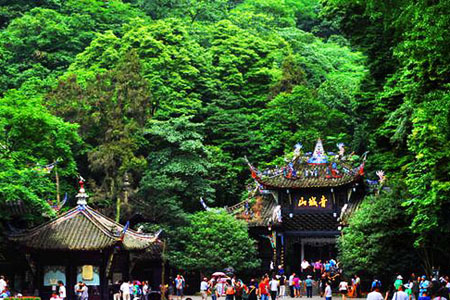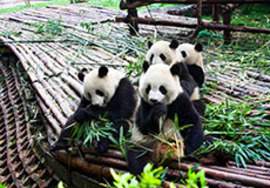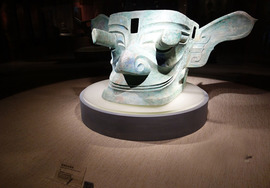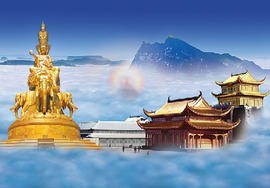Kangding tour area is an important part of Gongga Mountain National Scenic Area, located in Beiyala Township, Kangding City, Ganzi Prefecture, Sichuan Province, 17 kilometers away from Kangding City, 30 kilometers away from Kangding Airport, 322 kilometers away from Chengdu, with an altitude of 2,600-3,780 meters. It is located at the northern foot of Hengduan Mountain and belongs to a snowy mountain range, with a total area of 350 square kilometers. The scenic spot configuration is ingenious, and it is an ideal resort for sightseeing, entertainment, viewing, rest, recuperation, fitness, summer vacation and scientific research.
Kangding Mugecuo Scenic Area is located in the middle of Gongga Mountain, about 17 kilometers away from Kangding City. It is a national AAAA-level tourist scenic spot, a world natural heritage nomination site and a national key scenic spot. The scenic spot covers an area of about 350 square kilometers, and consists of six scenic spots: Dujuan Gorge, Fangcao Lawn, Qise Sea, Yaochi Boiling Spring, Mugecuo (Savage Sea) and Red Sea Grassland. There are many other alpine lakes and hot springs nearby, and virgin forests, grasslands and snow-capped mountains.
In the scenic area, you can not only watch the mountain scenery such as "Watching the Moon" and "Stone Buddha", but also appreciate the wonders of clouds, chardonnay, fog and water such as "Double Fog Falling into the Sea", "Muge Sunset", "Muge Dawn", "Muge Tide" and overlapping waterfalls.
The Attractions of Kangding:
Mugecuo National Park
Mugecuo, also known as Dahaizi, is one of the largest alpine lakes in northwest Sichuan. It is more than 3,700 meters above sea level, with a water area of nearly 4 square kilometers and a water depth of over 70 meters. In addition to forests and grasslands, the scenic spot is mainly composed of the Red Sea, the White Sea, the Black Sea and more than 30 nameless seas. It is a scenic and folk-custom sightseeing area for viewing snow-capped mountains, grasslands, primitive forests, azaleas and Tibetan herdsmen.
Because most of the water comes from the melting snow water, the visibility is very high with generally about 6-10 meters. Mugecuo((木格措)) is surrounded by mountains, forests and grasslands, and dozens of small Haizi just like the stars holding the moon. "
Mugecuo has four seasons in one day and different days in the morning and evening. In the early morning, the fog locks the sea. When the morning sun hits the sea, it is sparkling and the reflection of the lake light is dazzling. In the afternoon, when the breeze blows on your face, the sea is "three feet without wind and waves, rolling thousands of piles of snow". The mountains are silent, and the blue sea is quiet.
The golden beach on the left side of Mugecuo is known as the love beach, which is a highlight of Mugecuo. Its fine and soft sand is naturally golden, which is rare in the western Sichuan Plateau and naturally formed around lakes. The love beach is more than 110 meters long and 80 meters wide, with a total area of 8,800 square meters. It will also appear with the change of seasons.
The winter in Mugecuo is a pure and glittering fairyland on earth. The wide sea surface is frozen into thick ice, just like a huge silver mirror facing the blue sky, and the sea surface has become a natural entertainment place for skating and skiing.
Fangcaoping Lawn
Fangcaoping Lawn covers an area of about 500 square meters. It is like a gorgeous carpet, spreading among mountains and dense forests. There are fragrant grass and wild flowers everywhere, and the fragrant wild flowers will intoxicate tourists from afar. Fangcao lawn is also a natural paradise for whipping, prancing and playing with dams.
Seven-color Sea
Seven-color Sea is a plateau lake with water and hot springs at an altitude of 2,600 meters. The lake is crescent-shaped, with an area of about 20 hectares and a water depth of more than 20 meters. Surrounded by forests and meadows, it is elegant and quiet with its lake clear and transparent. With the change of sunshine and weather, the color of the lake changes in seven colors, hence it is called Seven-color Sea.
The lake in the morning is as calm and bright as a mirror, reflecting the blue sky, white clouds, mountains and snow; When the sun sets in the evening, the sparkling lake shines like gold.
Seven-color Sea is a symbiotic lake where cold springs and hot springs blend. On the right side of the lake, the underwater spring spouts beads and sprays jade, with hot fog curling up and the water temperature as high as 67℃, which is a good place for bathing and treating diseases.
Dujuan Gorge
Dujuan Gorge is a gorgeous canyon in the scenic area of Kangding Love Song (Mugecuo). Dujuan Gorge is connected to Seven-color Sea in the east and Mugecuo in the west. In the canyon, the stream sometimes rushes and sometimes relaxes. And the trees on both sides of the stream bank are lush, especially the original rhododendron forest.
The gorge is the ocean of flowers,gathering 68 varieties of rhododendrons. The flowering period is as long as 4 months. And the canyon presents rich original natural scenery. Walking in the meantime, it is refreshing!
Medicine pool boiling spring
Medicine pool boiling spring is 3 kilometers away from Seven-color sea, with an altitude of 3,500 meters. There are more than 20 high-temperature fountains here, the highest water temperature is as high as 90℃, and its heat source comes from the thermal storage area at 200℃ deep in the earth's crust.
The water quality contains many trace elements beneficial to human body, belonging to high-quality natural concentrated mineral springs of lithium, strontium, metasilicic acid and carbonic acid. Different spring eyes have their own unique effects on treating eye diseases, stomach diseases and rheumatism.
Tagong Grassland and Township
The history of Tagong:
"Tagong" in Tibetan means "the place that the Bodhisattva likes". According to the legend, when Princess Wencheng(文成公主)entered Tibet, siddhattha gotama, who was carrying with her, suddenly spoke that she would like to stay here. They immediately copied a statue of Buddha on the spot according to its original appearance. Since then, there has been a Tagong Temple on the plateau. Tagong grassland was named after it.
Tagong Monastery
Tagong Monaster( is a famous Sakya Temple in Ganzi Prefecture. After several repairs, the temple buildings are magnificent. It mainly consists of the following parts: First, the main hall is a combination of Chinese and Tibetan architectural style. The lower part is a traditional Tibetan stone wall, and the upper part is a Chinese-style roof. The temple is dedicated to the statue of Sarong Gongga, the master of Sakyamuni Sakyamuni Sect.
Second, every temple must have a dharma temple, which is heavily guarded and contains dharma idols. The third is the "Sleeping Buddha" Hall. The Lu Temple is dedicated to the statue of Sakyamuni, which was carried by Princess Wencheng in the Tang Dynasty when she entered Tibet.
The Buddha statue is an important cultural relic in the temple and a treasure of the town temple, and has a high reputation among religious believers in Ganzi Prefecture. The fourth is the Tower Hall, which is mainly dedicated to the "Zhituo" Tower (the Chinese name for Achievement Tower). It is said that there is a magical sandalwood stave in the tower, which is also the treasure of temples and towns.
The fifth is the turning corridor. There are two turning corridors in the temple: one is a small turning corridor around the tower hall; the other is a large turning corridor around the renovated temple (including Tallinn). In the morning and evening, there are local herdsmen or pilgrims from other places who recite Mani Sutra, turn "Dongke" by hand and turn it clockwise.
The sixth is "Zhakong" (that is, the monk's room). On the left and right sides of the main hall, there are two distinctive Tibetan "collapsed" buildings, which are dedicated to the residence of temple monks. The seventh is the Lotus Peanut Hall. The temple is opposite to the "Tower Hall" and stands on the front right side of the temple.
Eighth, a huge gold-plated bronze statue of Guanyin with a thousand hands was newly molded. The statue is beautiful in craftsmanship and vivid in shape.
Tagong grassland
Tagong Grassland is located in Tagong Town, kangding city, Ganzi Tibetan Autonomous Prefecture, Sichuan Province, which is 113 kilometers away from Kangding City and 3730 meters above sea level.
Tagong Grassland covers an area of 712.37 square kilometers. From Kangding to the west along the Sichuan-Tibet line, it crosses the Zheduo Mountain(折多山), passes through Xinduqiao and then travels 37.3 kilometers northwards to reach Tagong Temple, which is the most famous grassland in Ganzi Prefecture with convenient transportation.
The scenic spot is composed of rivers, grasslands, forests, mountains, temples, Tibetan houses and Tibetan rural customs along the route. The prairie is about 3000 meters to 4000 meters above sea level and belongs to a typical hilly plateau. It is cold in winter, cool in summer and short in spring and autumn, with plenty of sunshine and large temperature difference between day and night.
Tagong Grassland has beautiful and colorful scenery. It is a natural photography base, a good place for outdoor sports such as mountain climbing, hiking, horseback riding, camping and star watching, and a tourist attraction that you can leave at once.
Tagong grassland has gentle terrain, vast grassland, abundant aquatic plants and flocks of cattle and sheep. At the end of spring and the beginning of summer, the Tagong grassland is full of beautiful green grass, and the smoke from the tents is curled up, giving off a thick aroma of milk and tea.
Herdsmen drive cattle and sheep on the vast grassland, and a magnificent Yala Snow Mountain stands in front of the right behind the Tagong Temple, which complements the grassland. Against the background of blue sky and white clouds, the Tagong grassland is more amazing.
 Yala Snow Mountain
Yala Snow Mountain
Yala Snow Mountain is located at the junction of southeast Daofu county and Kangding County, with an altitude of 5,820 meters. The top of the mountain is covered with snow all year round, and it is a good blessing for you to see the snow peaks of Yala Snow Mountain. You can see the Yala Snow Mountain in Bamei Town, which was in the shape of a crown; In Tagong grassland, it is in the shape of a lotus throne surrounded by petals; The Yala Snow Mountain, which is just west of it, seems like a sitting Maitreya Buddha.
Yala Snow Mountain is one of the famous snow-capped mountains in Kangba District, and it is also one of the four sacred mountains recorded in the famous Tibetan epic Biography of King Gesar. According to the Tibetan ancient book, the Yala Snow Mountain is the "second Shambhala". The so-called Shambhala is the place where immortals live and the ideal realm in the eyes of Tibetans, and it is illusory. The second Shambhala is real, right in front of our eyes.
On auspicious days, Yala Snow Mountain sits under the blue sky, and a mushroom-shaped white cloud rises, just like the light smoke of sacrifice. Because the Yala Snow Mountain is very aura, and it is valued by King Gesar , a great Tibetan hero. It has been a sacred mountain worshipped by Huiyuan Temple and the surrounding Tibetans in past dynasties.
Horse Riding Festival
Tagong grassland holds 1-2 traditional horse races every year. At that time, herders dressed in festive costumes gather in Tagong grassland from all directions to celebrate the traditional festival. On the race course, horses galloped, and the thrilling horse performance burst into applause, cheers and whistles, which merged into a sea of joy.
Tour Map of Ganzi Tibetan Prefecture:
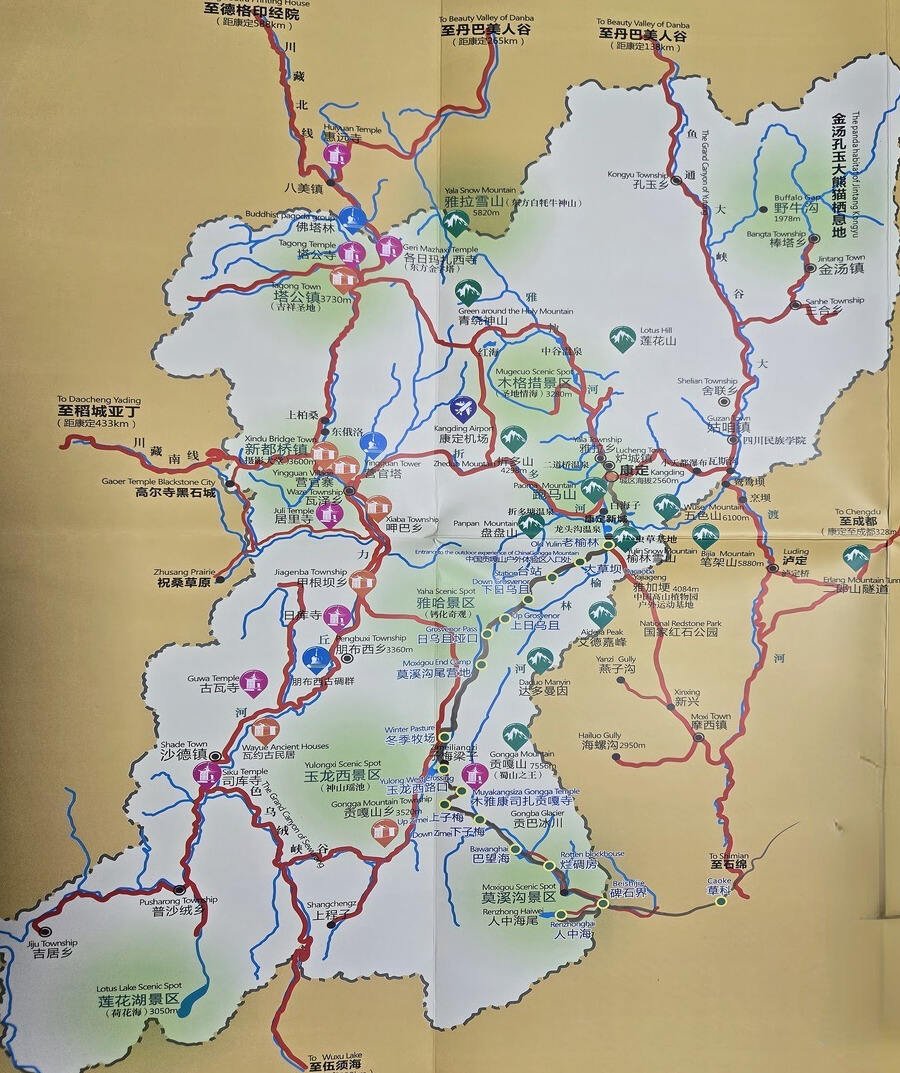
Weather Information of Kangding City:

Note: From January to December, red line is the highest Centigrade in average, blue line is the lowest climate in average.
6. The Most Beautiful Sichuan Plateau Tours
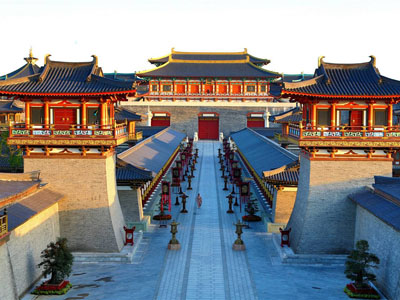

 Yala Snow Mountain
Yala Snow Mountain


